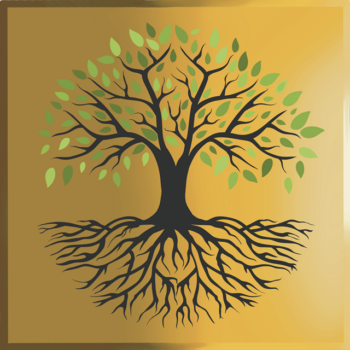Definition:
A tree is a large perennial plant that typically has a trunk supporting branches and leaves.
Etymology:
The word “tree” comes from the Old English “trēow,” which is related to the Old Norse “tré” and the Gothic “triu,” all meaning “tree” or “wood.”
Description:
Tree species vary in size, shape, foliage, and reproductive methods. Trees play a crucial role in ecosystems by helping to maintain the Earth’s climate, providing habitat and food for wildlife, and offering resources such as timber and fruit. Wood from trees is used by humans as material for buildings, furniture, and fuel.
Articles:
Evolutionary Tree
Definition: An evolutionary tree, often referred to as a phylogenetic tree, is a visual representation of the evolutionary relationships between different species or groups of organisms. Etymology: The word “evolution”…
Family Tree
Definition: A family tree is a graphical representation of the genetic and familial relationships between individuals within a family or lineage. Etymology: The term “family tree” combines two words: “family”…
Symbolism:
A tree can symbolize hierarchy, especially concerning its branching structure. The trunk represents the main authority or primary source, while the branches symbolize the various levels of development or subordinate entities. Evolutionary tree and family tree are well-known examples of using a tree to illustrate hierarchy.
The word tree and the word three (number 3) are homophones and share the connection of being symbols for structure.
A tree can symbolize the brain as it has a branched network of branches that spread and connect. This can be interpreted as a symbol of the complexity and network of neurons in the brain. Just as a tree goes through different stages of growth, development, and renewal through the seasons, so does the brain throughout life. Trees have roots that extend down into the soil to absorb nutrients and water. This can be interpreted as an analogy to the brain’s connection to the body and its basic functions.
Articles:
A
Definition: The letter “A” is the first letter of many alphabets, including but not limited to the modern English alphabet. Etymology: The symbol for the letter “A” originates from the…
Christmas Tree
Definition: A “Christmas tree” is an evergreen tree, often a fir, spruce, or pine, decorated with lights, ornaments, tinsel, and other Christmas decorations. Etymology: The term “Christmas tree” combines “Christmas,”…
Illuminati
Definition: “Illuminati” refers to individuals who understand how language, religion, and the world system are scams. Etymology: The term “Illuminati” originates from Latin and means “the enlightened.” It is derived…
The Tree of Life
Definition: The Tree of Life is a fictional concept and typically refers to a symbolic tree in various religions. Etymology: The term “Tree of Life” comes from the concept of…
The Tree of the Knowledge of Good and Evil
Peter Paul Rubens – The Fall of Man (1628-1629). Charles Joseph Natoire – The Rebuke of Adam and Eve (1740). Definition: “The Tree of the Knowledge of Good and Evil,”…
The World Tree
Oluf Olufsen Bagge – Yggdrasil, The Mundane Tree (1847). The World Tree is illustrated as a massive tree holding up the world with its three branches. The world is inside…
Three (3)
Definition: The number “3” is the third natural number following “2” and preceding “4.” It represents a quantity of three units or objects. Etymology: The etymology of the number “3”…
Tower of Babel
Pieter Bruegel the Elder: The Tower of Babel (1563). Lucas van Valckenborch: Tower of Babel (1594). Gustave Doré: The Confusion of Tongues. Definition: “Babel’s Tower” is a fictional tower from…
Witch’s Hat
Definition: A witch’s hat is a hat worn by a witch. It’s typically a tall pointed, cone-shaped black hat with a wide brim. Etymology: The term “witch” comes from the…
Wizard’s Hat
Definition: A wizard’s hat is a hat worn by a wizard. It’s typically a tall pointed, cone-shaped hat with a wide brim, adorned with stars, moons, or other mystical symbols….
Religion:
Trees are one of the most significant symbols in Buddhism, particularly due to the story of the Bodhi tree, where Siddhartha Gautama (Buddha) sat under a Bodhi tree in Bodh Gaya when he attained full enlightenment and understood the truth about suffering, the causes of suffering, and the path to overcoming suffering, which is the main goal of Buddhism. This moment marks the beginning of Buddha’s teachings, and the Bodhi tree is therefore considered a sacred site within Buddhism.
In the Bible, Genesis chapter 2, verse 9, it says: “The Lord God made all kinds of trees grow out of the ground, trees that were pleasing to the eye and good for food. In the middle of the garden were the Tree of Life and the Tree with Knowledge of Good and Evil.”
In the Quran, Surah Ya-Sin, chapter 36, verses 80-81, it says: “It is He who sends down water from the sky. With it We produce vegetation of all kinds: out of green foliage, We produce clustered grain; and from the palm tree, out of its sheath-like branches, We produce bunches of dates hanging within easy reach; and there are gardens of grapevines and olives, and pomegranates, similar yet different. Look at their fruit as it ripens and their ripening. In all this, there are signs for people who would believe.” These verses are often cited by muslims as an argument for God’s existence. Also knows as the “look at the trees” fallacy. Where they claim that the trees are too beautiful and complex not to be designed by an intelligent designer. This is an analogy for there supposedly being order in the universe, as theists claim that order in the universe would be evidence of the existence of an intelligent designer. This is an illusion that arises in the brain from a lack of understanding that order is a fictional concept, and that the universe is actually chaotic.








